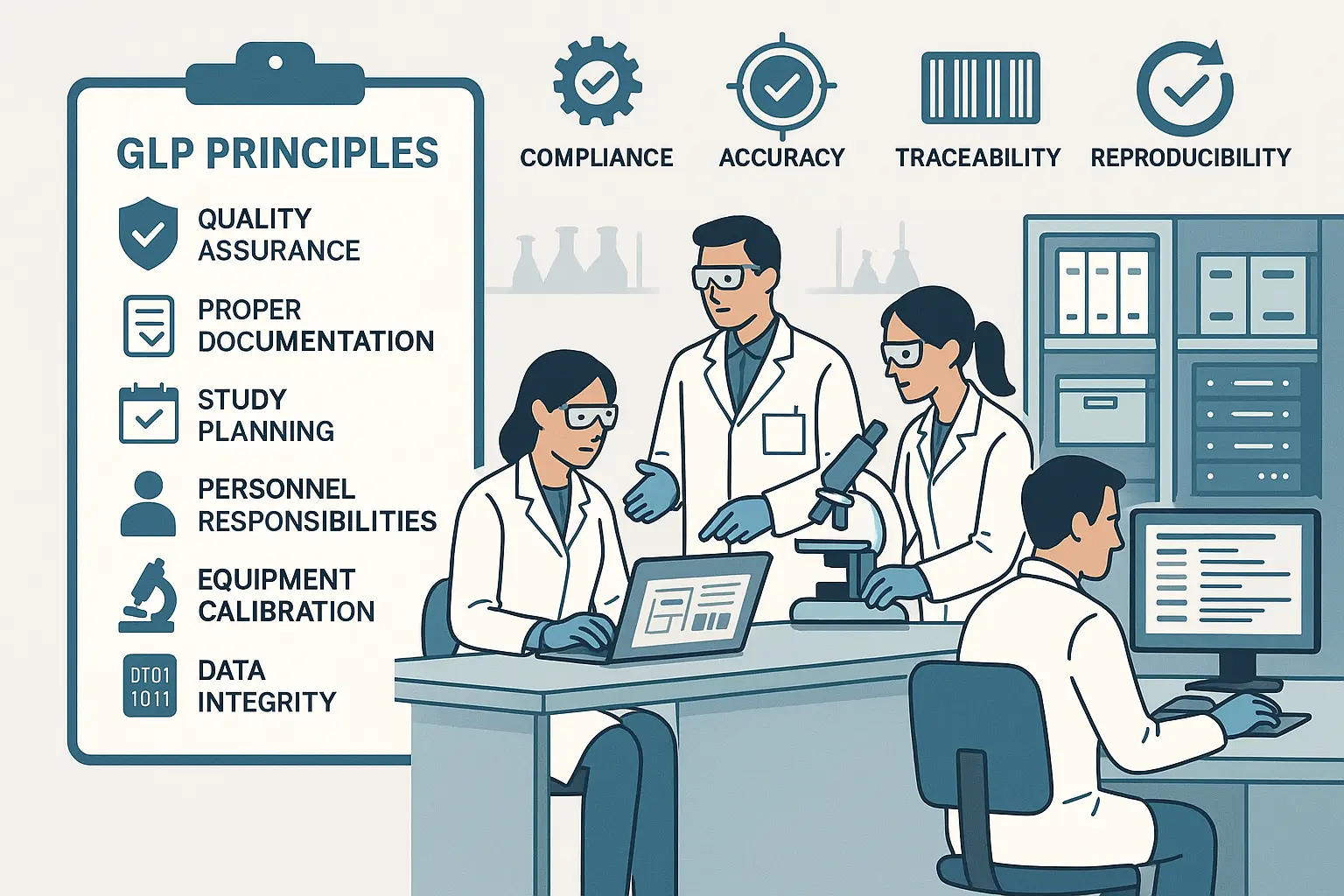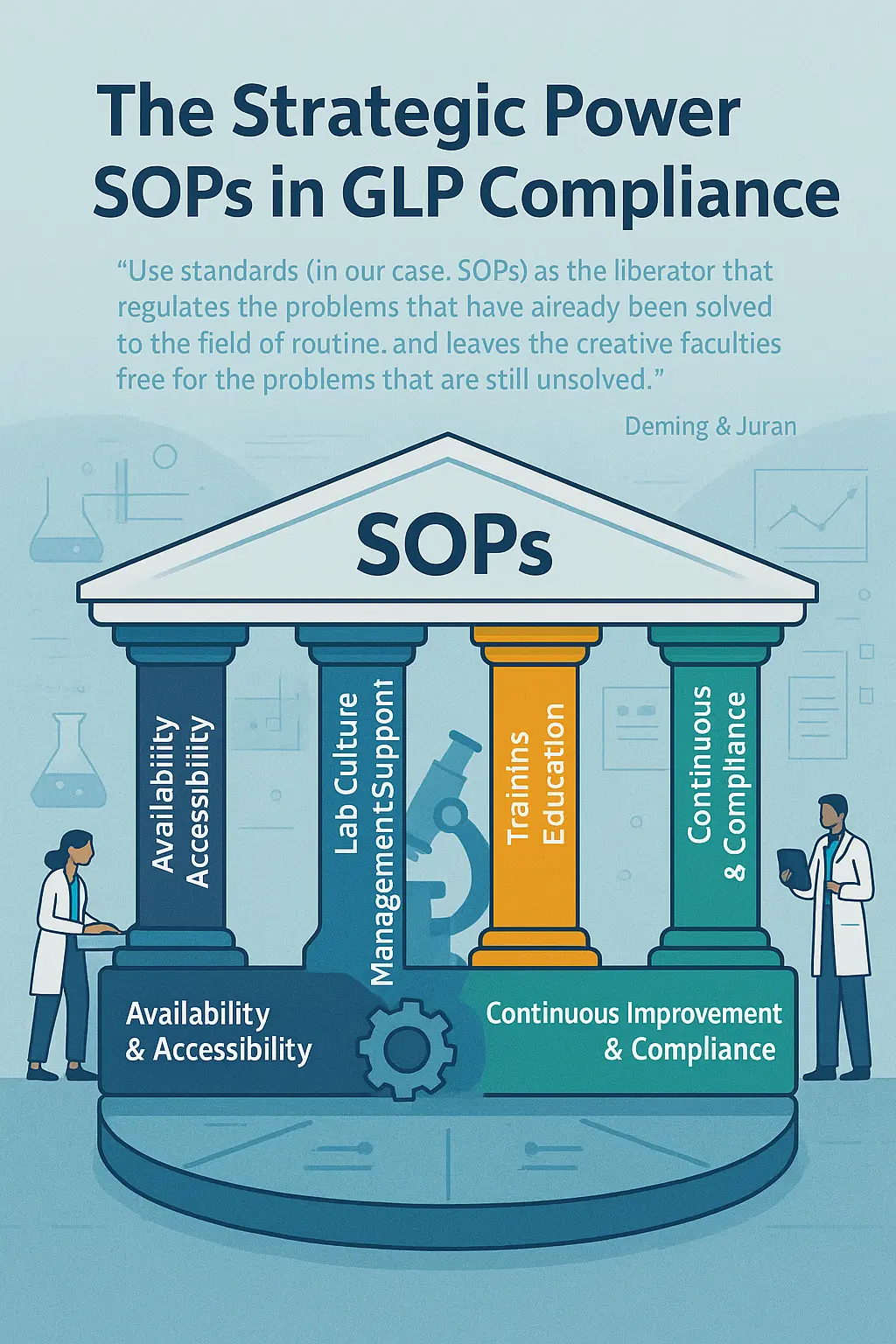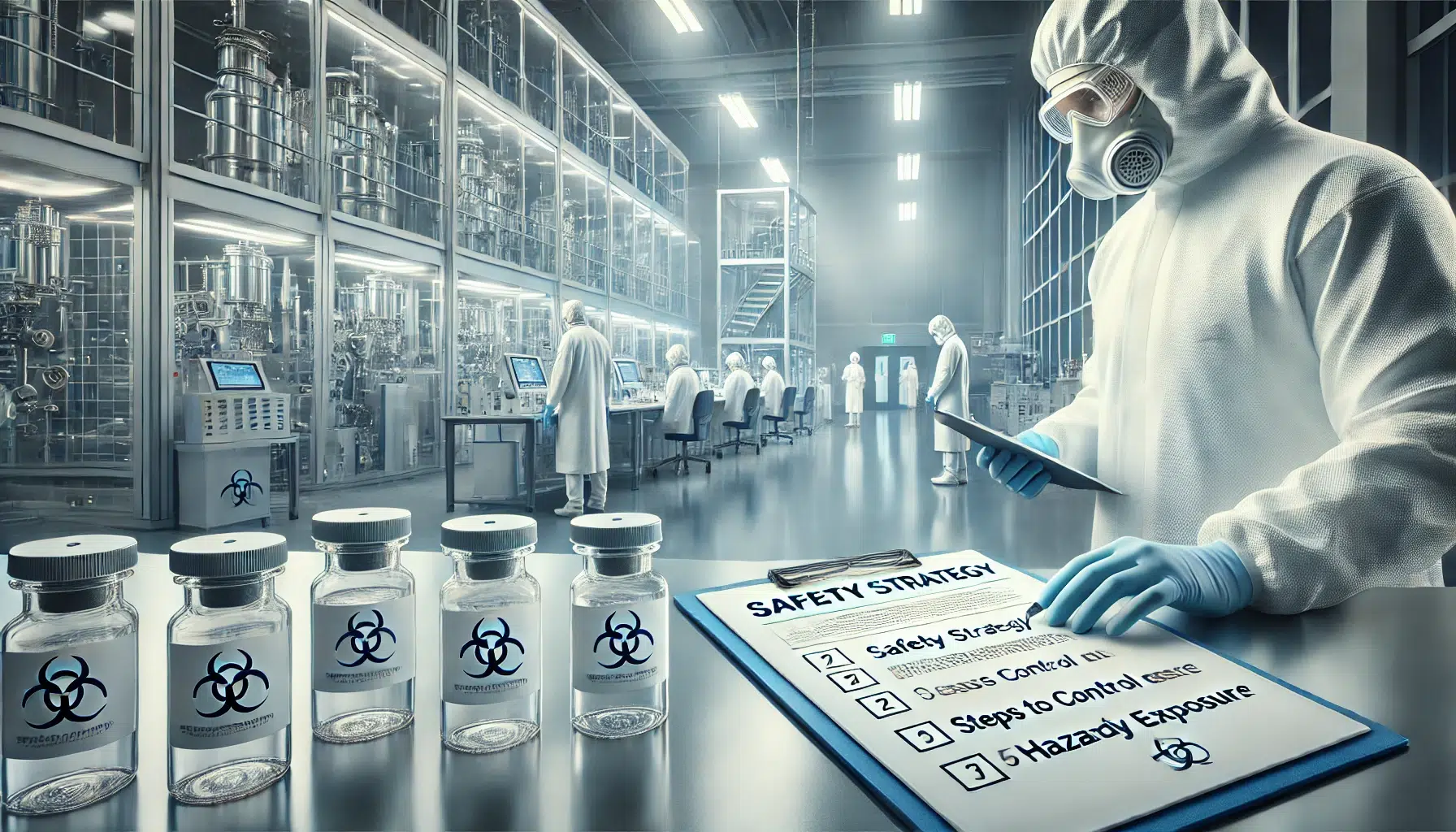From lab bench to your well-being: GLP makes the crucial connection.
What Ensures the Safety of Medicines and Chemicals?
Ever wonder how we can trust the safety of the medicines administered by patients and the safety of chemicals in use?
The answer lies in GOOD LABORATORY PRACTICE (GLP). (OECD, USFDA provided the early basis for GLP regulations concerned with the non-clinical laboratories’ studies).
The Origin of Good Laboratory Practice (GLP)
The concept of Good Laboratory Practice, a formal regulatory requirement, was developed in the USA.
This directly responded to worries about the accuracy of non-clinical safety data submitted to the Food and Drug Administration (FDA) for New Drug Applications (NDAs). Investigations revealed issues like: Instances of fraud, Improper study planning, Poor execution, Insufficient documentation of methods and outcomes
The Purpose Behind GLP Regulations
The purpose of Good Laboratory Practice regulations was to guarantee that FDA submissions accurately and fully reflected the experimental work.
Similarly, the US Environmental Protection Agency (EPA) faced study quality issues in the chemical and pesticide industries, prompting it to issue its own draft GLP regulations.
Due to differing legal bases, the final EPA rules were published in two separate sections: 40 CFR 160 and 40 CFR 792.
Global Harmonization by OECD
On the international level, the Organization for Economic Co-operation and Development (OECD) assembled an expert group to formulate the first OECD Principles of GLP.
This was an effort to:
- Eliminate unnecessary duplication of experiments
- Avoid non-tariff barriers to trade in chemicals
- Promote mutual acceptance of non-clinical safety test data
Scope of application
Such GLP principles are to be applied to the non-clinical safety testing of all elements contained in pharmaceutical products, pesticides, cosmetics, vet. Drugs and food additives, as well as Industrial chemicals. The above-stated elements can be synthetic or of natural origin, or even may be living organisms. Testing these elements & compiling data on the properties of the elements and/or their safety concerning human health and/or the environment.
These principles are conducted on studies held in the laboratory and other places, such as greenhouses and the field. GLP principles address all non-clinical health & environmental safety studies that are mandatory for the conducting, registering, or licensing of pharmaceuticals and other products.
The test facility includes the personnel, premises, and operational units needed to conduct the non-clinical health & environmental safety study. Non-clinical health and environmental safety study is an experiment or set of experiments where a test item is studied under laboratory conditions to compile data about its properties and/or its safety with the aim of submission to relevant regulatory authorities. This is performed to facilitate good operational management and the ability to reconstruct each test study fully. The principles necessitate that institutions allocate roles & responsibilities to staff, with a particular focus on the planning, monitoring. recording, reporting & archiving stages.
The Organization for Economic Cooperation and Development (OECD) highlights that all governments are concerned with the quality of non-clinical health studies because these studies provide the critical data for assessing the safety of test items and, importantly, for determining whether proceeding to human clinical trials is safe.
The OECD GLP Principles were developed to establish the necessary criteria for conducting these studies, with the major objective of ensuring the production of high-quality test data. The OECD underscores that confidence in the quality of test data is fundamental to study credibility and enables the mutual acceptance of data among countries. As the OECD states, this mutual reliance on data from other countries avoids duplicative testing, resulting in time and resource savings. Consequently, the application of GLP principles helps prevent technical trade barriers and further protects human health and the environment, revealing the OECD’s interest in promoting economic development and cooperation between member states.
What is GLP?
Good laboratory practice is defined in the OECD principles as “a quality system interested with the organizational process & the conditions under which non-clinical health & environmental safety studies are implicated, observed, organized, recorded, archived, and reported”.
The main objective of the principles of GLP is to facilitate the production of reliable test data. Furthermore, GLP establishes a mechanism for the comprehensive management of laboratory studies, including planning, execution, documentation and subsequent archiving.
A fundamental purpose of GLP is to guarantee the quality and reliability of non-clinical safety data. This is achieved through detailed guidelines for study conduct, documentation, and quality assurance, which serve in minimizing the probability of occurrence of errors and/or the possibility of fraudulent manipulation of results.
The equal importance of all aspects for GLP principles means that partial implementation of the requirements of GLP automatically invalidates any claim of compliance. A test facility can only legitimately assert GLP compliance through the complete implementation & consistent adherence to the integrity of the GLP regulations.
In the context of pharmaceutical development, the regulatory application of GLP principles applies to studies which: –
GLP requirements for non-clinical lab studies assessing drug safety apply to different categories of studies, and these categories are determined by each country’s legal regulations. Covering mainly:
- Single-dose toxicity
- Repeated dose toxicity (sub-acute and chronic)
- Reproductive toxicity (fertility, embryo-fetal toxicity and teratogenicity, peri-/postnatal toxicity)
- Mutagenic potential
- Carcinogenic potential
- Toxicokinetics
- Pharmacodynamic studies are designed to test the potential for adverse effects
- Local tolerance studies, including phototoxicity, irritation, and sensitization studies, or testing for suspected addictive and/or withdrawal effects of drugs
GLP doesn’t typically cover the following
As can be understood from the above, GLP doesn’t typically cover the following:
- Basic research (studies that are aimed at fundamental scientific discovery, without a stated regulatory purpose)
- Clinical studies (such studies are governed by GCP (good clinical practice), not GLP
- Analytical testing (routine quality control tests or analytical methods development, unless directly related to a non-clinical safety study)
Although the scientific design of studies, guided by guidelines & assessed by regulatory bodies for market approval, falls outside GLP’s direct scope, following GLP principles is crucial for reinforcing study credibility. This is achieved by substantially reducing potential errors & uncertainties. The use of technically validated and approved SOPs plays a key role in avoiding systematic errors & artifacts. Establishing a study plan with a defined scientific purpose will proactively prevent false starts & limit the occurrence of incomplete or inconclusive studies.
The Key Principles of GLP
The GLP principles provide a framework for the proper management of non-clinical safety studies, supporting researchers in executing their work according to established scientific design. The GLP regulations are distinct from the scientific & technical aspects of the studies. The scientific evaluation of these studies falls to research scientists, registration authorities & the international scientific community. Implementing GLP requirements for planning, technique Control, record-keeping, activity monitoring, & data archiving ensures the elimination of many error sources, a benefit that extends to the targeted industry.

In brief, GLP focuses mainly on the following points:
- Resources: Organization, personnel, facilities & equipment.
- Characterization Test items & test systems.
- Rules: Protocol, study plan, and written procedures.
- Results: Raw data, final report, and archives.
- Quality Assurance: Independent monitoring for research purposes
Emphasizing the importance of SOPs
The existence of a complete and effective set of Standard Operating Procedures (SOPs) is fundamental to achieving GLP compliance. Setting up this SOP system is frequently identified as the most important and time-consuming task within the compliance process. Furthermore, regardless of GLP requirements, established assurance techniques and good management practices inherently demand standardized,approved, written working procedures.
As Deming & Juran suggested and reflected in the following quote: “Use standards (in our case: SOPs) as the liberator that regulates the problems that have already been solved to the field of routine, & leaves the creative faculties free for the problems that are still unsolved.
Therefore, the successful establishment of SOP requires:

- A reliable SOP management system is crucial to guarantee that the current SOPs are available in the right place.
- The successful integration of SOP into the laboratory’s organization & culture, with sustained enthusiastic support from all management levels, is required.
- Educating & training personnel according to SOPs ensures everyone performs procedures consistently.
Reference:
WHO Handbook: Good Laboratory Practice(GLP)

